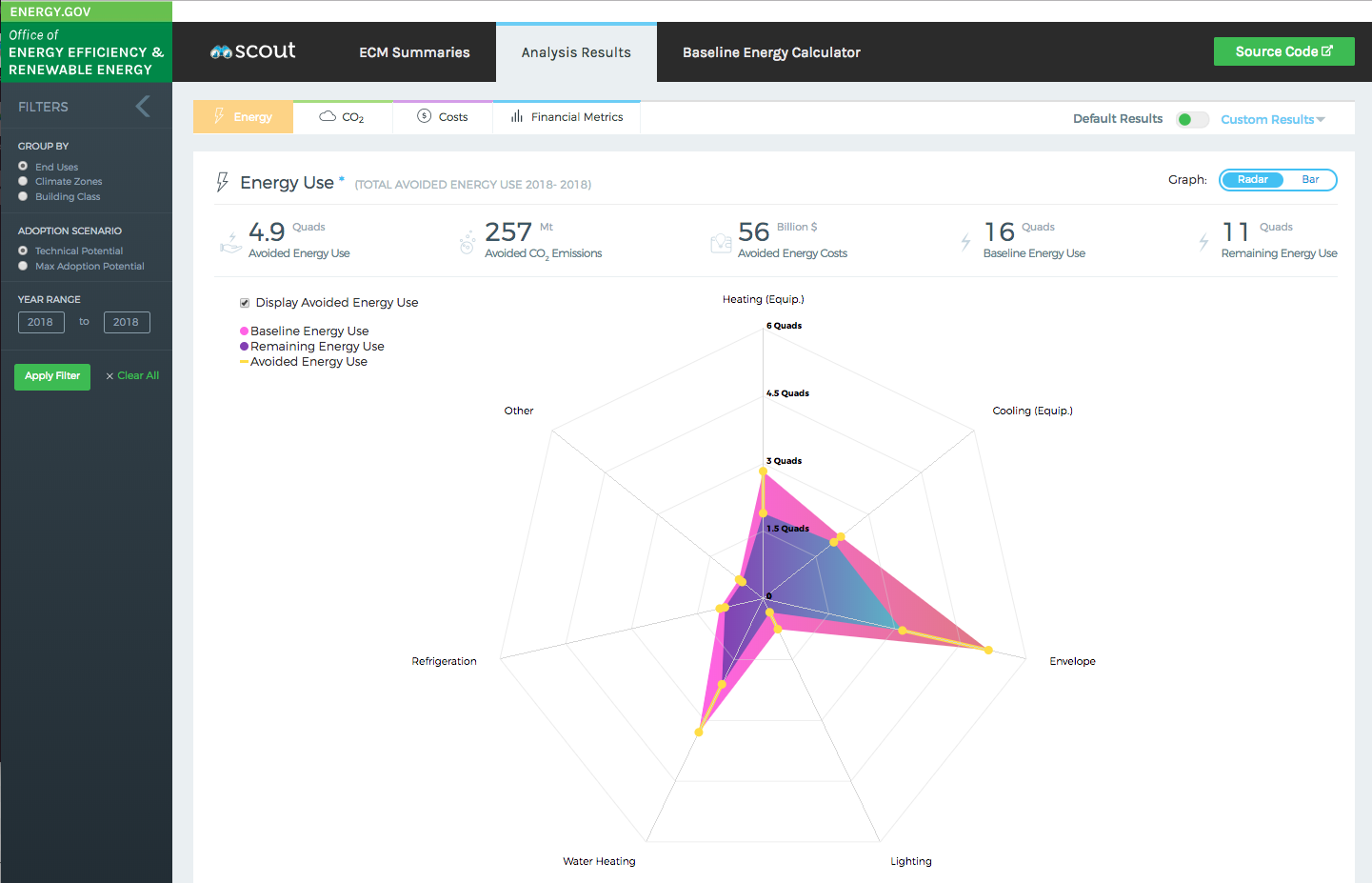New App Models National Building Energy Use

Looking around the typical home or office, many homeowners and employees will find a staggering amount of technology on display: the refrigerator that keeps our food fresh; the thermostat that controls room temperature; the array of electronics to enable (and sometimes impede) our productivity; the lights that make tasks visible at night.
“As this large technology base continues to grow, the number of ways that a building can use energy grows with it, meaning that the best opportunities for saving energy in buildings are always changing,” said Jared Langevin, research scientist at Lawrence Berkeley National Laboratory (Berkeley Lab). “What’s more, the pace of change is relatively quick—ask a homeowner from the year 2000 what they think of smart thermostats or where they buy their LED light bulbs, and they’d have little clue of what you were talking about.”
Into this technology development maelstrom enters Scout, a software program developed by the U.S. Department of Energy Building Technologies Office (BTO) in partnership with Berkeley Lab and the National Renewable Energy Laboratory (NREL). Scout estimates the national impacts of emerging energy-efficient technologies and systems on building energy use and operating costs, drawing from a consistent energy use baseline, standard energy conservation measure (ECM) definitions, and realistic simulations of stock turnover and ECM competition dynamics. With support from BTO, Scout is now available as a web-based application for sharing Scout’s capabilities with the broader energy analysis community.
“The Scout web app (scout.energy.gov) will be of interest to users who want to know how new energy-saving technologies or approaches fit into the larger U.S. market for energy efficiency—both at present and decades into the future,” said Chioke Harris, an NREL research engineer collaborating with Langevin on the project. Looking for simple definitions of technologies and their national impacts to compare with similar technologies? Visit the ECM Summaries page. Curious about the total impacts of a technology portfolio and which end uses or technologies contribute most to those impacts? The Analysis Results page presents those insights. Just want to know about the status-quo outlook for U.S. building energy use? The Baseline Energy Calculator provides that information.

The web app can help all kinds of folks better understand how energy use in buildings might change with the adoption of energy-efficient technologies, as well as the potential cost savings from those technologies. Companies that own or manage large building portfolios can learn about the financial performance of various technologies using metrics that can help them with the business justification for investing in energy efficiency. Energy policy organizations and nonprofits can look at those same technologies through the lenses of their energy and cost savings potential for a specific region or across the United States. Researchers interested in developing next-generation energy-efficient building technologies can use the baseline energy use projections and ECM definitions to better understand where they can have the greatest impact. Users intrigued by the app can take the leap and download the Scout analysis engine to get results custom tailored to their unique interests.
“Looking ahead, Scout’s flexibility to folding in new input data, technology areas, and valuation metrics will be essential in keeping the program viable as the building energy use landscape continues to change,” said Langevin. In just the last few months, for example, Scout’s baseline data were updated reflect the latest Energy Information Administration national energy use projectionsand new analysis capabilities were piloted that will allow users to value energy efficiency differently by time of day and season, reflecting an increasing focus on buildings as a source of grid services. All of these updates were pushed to the Scout GitHub repository and were carefully documented with an eye towards transparency.
“We expect that scout.energy.gov will bring new tests of Scout’s flexibility, opening the program to exciting use cases and avenues of investigation that have yet to be explored,” Langevin said. In the meantime, interested readers are encouraged to get started with their own Scout analyses and to keep an eye out for new Scout releases.